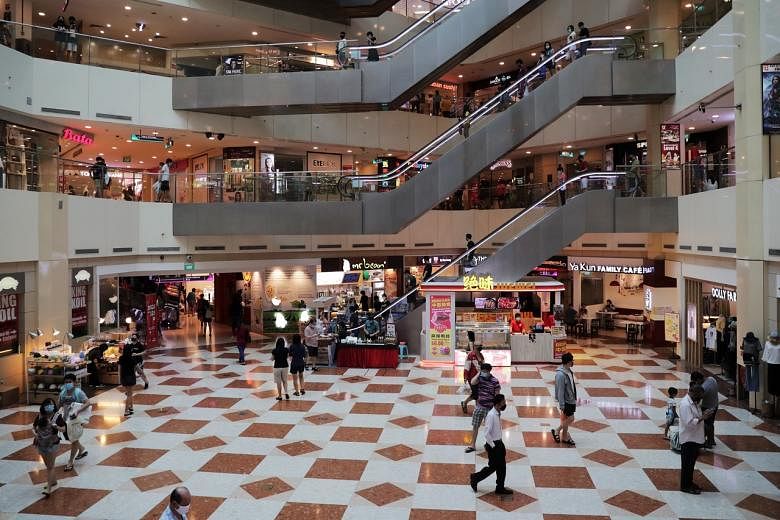SINGAPORE - Singapore retail sales in May suffered their biggest year-on-year fall since record-keeping began in 1986 amid a second month of circuit breaker measures, but the worst may be over for retailers, with the economy's phased reopening.
Takings at the till plunged by 52.1 per cent year on year, after sinking a then-record 40.3 per cent in April, according to data released by the Department of Statistics on Friday (July 3). Excluding motor vehicles, retail sales fell 45.2 per cent.
This makes for 16 straight months that retail sales have dropped.
May, however, is likely to be the cruellest month for retailers, with sales set to begin recovering as Singapore's partial lockdown began gradually lifting on June 2.
“With the re-opening of stores during Phase 2, we can expect some improvement from June onwards with a potential initial snapback in pent-up demand, " said Ms Selena Ling, head of treasury research & strategy at OCBC Bank.
But she cautioned that the real test is whether the demand momentum can sustain into the second half of 2020, given the hit on jobs here and the emergence of a second wave of Covid-19 infections globally, as well as the hesitation to resume international travel .
"At this juncture, given the significant uncertainties, even an initial June retail bounce may not be sufficient to compensate for the shortfall seen in the two months of cold storage during circuit breaker," she said.
Ms Ling sees retail sales contracting by a milder 10.5 per cent in June and possibly returning to growth by the fourth quarter of this year. "That said, retail sales are still likely to contract by 9.5 per cent for the whole of 2020, signifying a Covid-19 induced recession for Singapore," she said.
UOB economist Barnabas Gan expects full-year retail sales to shrink by 5 per cent "with downside risks".
Month on month and seasonally adjusted, retail turnover dropped 21.5 per cent in May from Apri, Friday's report showed. Excluding motor vehicles, sales declined 20.1 per cent.
Like in April, only two categories of retail sales saw growth in May. With essential services remaining open, sales at supermarkets and hypermarkets rose 56.1 per cent, while those of minimarts and convenience stores rose 9.1 per cent.
Sellers of discretionary items were again hit hardest by the forced closure, with sales of watches and jewellery plunging 96.9 per cent. Department store sales sank 93.4 per cent while shops selling clothes and footwear saw takings drop 89.1 per cent.
Motor vehicle sales tumbled 85.7 per cent, while sales at petrol service stations fell 58.2 per cent.
Sales of recreational goods; optical goods and books; cosmetics, toiletries and medical goods; furniture and household equipment; and computer & telecommunications equipment all saw double-digit declines.
With all food and beverage establishments still only allowed to operate on a takeaway or delivery basis in May, takings in this category fell 50.1 per cent, a slight improvement from the 52.7 per cent drop in April.
Restaurants again bore the blunt, with sales diving 68.7 per cent year on year. Revenue dropped 45.1 per cent for food caterers and 41.4 per cent for cafes, food courts and other eating places. Meanwhile, fast food outlets also saw a decline of 20.5 per cent in sales.
Online sales as a share of May's $1.8 billion in total turnover surged to a record high of 24.5 per cent ($441.5 million), since data was available from 2018. That translates to a 125.6 per cent year-on-year jump in online sales.
The evident popularity of online shopping seen in both April and May will likely encourage retail stores to actively incorporate IT and digital solutions to supplement their businesses, said Mr Gan.
Retailers who benefited most from online sales were in computer & telecommunication equipment, where online sales accounted for 94.3 per cent of total sales in May. They were followed by furniture & household equipment (93.6 per cent), food & beverages (44.6 per cent) and supermarkets & hypermarkets (9.6 per cent).












